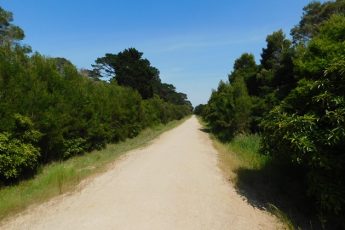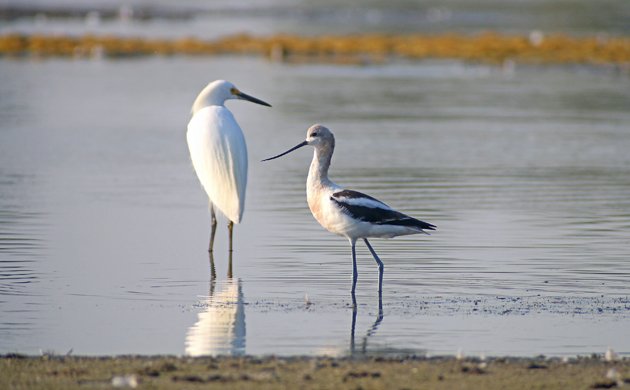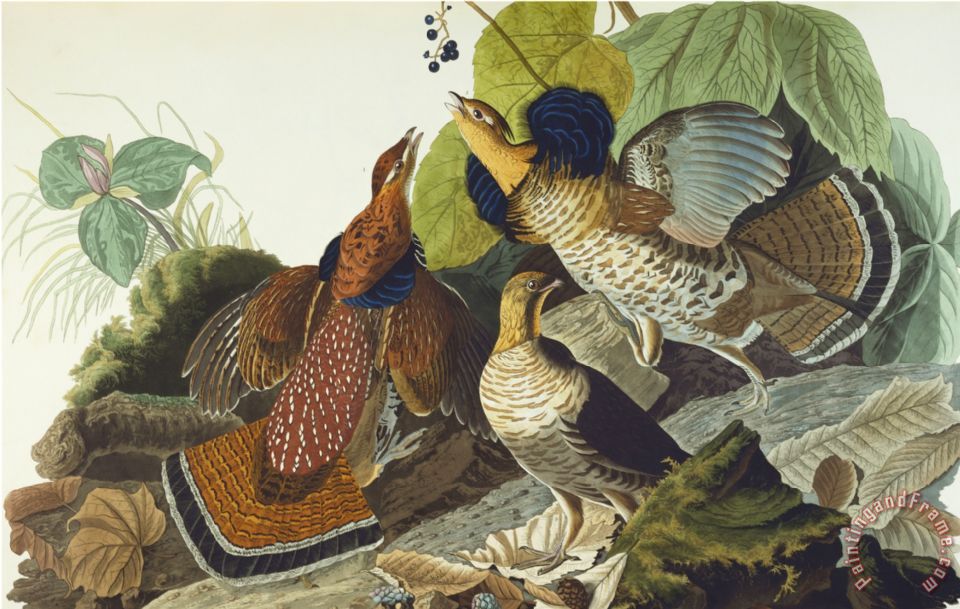I have started a little project a few weeks ago. More precisely, I have started a project with a small goal (hence my calling it “little”) but with a long, long way to get there.
I want to know – just roughly – how many birds I have seen in my life. Not how many bird species, but how many bird individuals.
In order to achieve this, I have started to “digitalize” all my notes and various travel reports, which is no small feat. I reckon that this will keep me busy for at least a year, but one of the project’s most critical aspects has recently led to an interesting insight, which I feel is worth blogging about.
The critical aspect is this:
I will only find out how many birds I have counted and written down. However, this may be way, way below the number of birds I have actually seen but not actively noted: from the car, walking to work, in front of my office window and so on. But just how “way, way below” the actual number will my data’s overall sum be?
I have no idea!
In order to shed some dim light onto this dark figure, I painstakingly wrote down every single bird I saw during a recent visit to the Wagbachniederung, a very attractive wetland complex (former poo ponds) near Heidelberg. The Wagbachniederung is reknown for its waterfowl, shorebirds, and good breeding populations of several species that are very localized in Germany. During such a visit, one would normally just write down the numbers for the “better” duck species, for all the shorebirds, and for a few selected songbird and raptor species. The rest would be uncounted and not put down in the notebook.
A classic Wagbachniederung scene: reeds, water & ducks (Gadwall, Shoveler, Teal, Pintail, Common Pochard, Mallard)
So, this time I counted the common species – one by one – with the same verve as I would apply to the area’s “specials”, and the results are remarkable. Below is a long, long list of the species I encountered (66, which is a very respectable species count for the middle of March in southern Germany) and the totals for each species. Species in bold are species I would have counted and written down as “special” in my notebook – and that would thus have been included into my species statistics mentioned above.
- Great Crested Grebe – 3
- Little Grebe – 10
- Black-necked Grebe – 5
- Cormorant – 76
- Grey Heron – 2
- Mute Swan – 48
- Greylag Goose – 48
- Bar-headed Goose – 1 (escape/feral)
- Canada Goose – 18
- Egyptian Goose – 1
- Mallard – 88
- Gadwall – 492
- Pintail – 3
- Shoveler – 21
- Teal – 70
- Garganey – 5
- Red-crested Pochard – 3
- Pochard – 54
- Tufted Duck – 44
- Goldeneye – 2
- Goosander – 1
- Goshawk – 1
- Common Buzzard – 6
- Pheasant – 3
- Water Rail – 3
- Moorhen – 1
- Coot – 99
- Little Ringed Plover – 1
- Lapwing – 1
- Black-headed Gull – 7
- Yellow-legged Gull – 2
- Woodpigeon – 19
- Stock Dove – 6
- Black Woodpecker – 1
- Great Spotted Woodpecker – 2
- Barn Swallow – 1
- Meadow Pipit – 1
- White Wagtail – 6
- Winter Wren – 5
- Dunnock – 4
- Eurasian Robin – 2
- Eurasian Blackbird – 5
- Fieldfare – 297 (very strong migration)
- Song Thrush – 4
- Mistle Thrush – 2
- Chiffchaff – 1
- Firecrest – 1
- Blue Tit – 13
- Great Tit – 22
- Long-tailed Tit – 12
- Nuthatch – 2
- Short-toed Treecreeper – 1
- Great Grey Shrike – 1
- European Starling – 49
- Jay – 2
- Magpie – 5
- Carrion Crow – 13
- Eurasian Tree Sparrow – 178
- House Sparrow – 15
- Chaffinch – 15
- Hawfinch – 1
- Serin – 1
- Greenfinch – 12
- Goldfinch – 8
- Bullfinch – 3
- Reed Bunting – 7
If I haven’t messed up above, the overall sum should be 1,816.
A fine adult male Goshawk where you scarcely ever see it – perched on reeds after an unsuccessful waterfowl hunt
As a purely “recreational” birder, who only writes down what is personally interesting, the sum would be 30, or 1.6% of the individuals present at the time of my visit.
Just 1.6% !
And if I was more thorough and e.g. conducted a complete waterfowl survey, the sum would be 1,115 or 61% of the individuals present at the time of my visit.
This still means 40% of the birds in a given area would go unnoticed or rather unnoted by me even on “counting days”.
Whatever the outcome of my “little project” of counting all the birds I have seen in my life will be (probably in the – very – low Millions), it seems safe to assume that this number will be no more than 50% of the amount of birds I have actually laid eyes upon in my life.
Which, I guess, is nice to know.








 New writers welcome – please contact us for details.
New writers welcome – please contact us for details.

















Interesting, 50% may even be too high. Like today I watched a flock of White Stork flying above the house, I only counted to 70 on the photo I took but there were much more than that..and at Nylsvlei in January, I observed a huge flock of Blackwinged Pratincole that I could never count accurately, again I got to 500 specks on the photo but there were a lot more than that….How many Laughing doves visit the garden, how many Eurasian Bee-Eaters have I seen? Mind boggling stuff!!
Out of curiosity, I added up the birds I’ve reported to eBird and came up with a total of 417,224. (Spreadsheets make that easy to do.) The numbers I enter into eBird are a fairly limited sample of the bird individuals I have seen in my life. Even as a birder, there have been many occasions when I didn’t keep track of the numbers or forgot to enter a checklist. So the real number of individual birds would easily range into the millions, and likely many more than that.
Look out Indonesia! There’s a mad German heading your way! I presume the company you work for provide those nice little tally books….so convenient for birding! 🙂
@Gareth: yes, true, the Laughing Doves alone probably would catapult you into the Millions in Sa! 🙂 I guess it depends on where you live and bird. I have spent many years at the Baltic coast where I used to see huuuuuge flocks of White-fronted Geese, the biggest one was 120,000 individuals strong. I am therefore quite sure that the un-noted “every-day birds” will be a relatively small fraction compared to these numbers. Now that I live inland, however, it’s an entirely different story, and these birds might make up the majority of birds I see. Difficult, difficult,… And yeah: there isn’t an aspect about birds in SA that isn’t mind-boggling. Thanks for rubbing it in! 🙂
@John: Thanks for giving your numbers/totals! It is an intriguing project, and to get an impression from other birders is quite interesting.
@Clare: I take that as a big compliment! 🙂 And of course the company does, but they had to have special editions printed, big fat ones because I tend to see so many birds everywhere that small tally books won’t do it for me! I am really looking forward to Indonesia. Of course my survey sites may 8or may not) be rather boring and bird-less as they are industrial areas. But I have plans of spending the time off in some very fine areas surrounding the survey sites. I really don’t know what to expect. I am hoping for 200 species, but don’t know how realistic that may be. Heck ,it’s a business trip! Even if I just see one single bird, it’ll be a bonus! 🙂
Here’s your checklist Jochen! 🙂
http://avibase.bsc-eoc.org/checklist.jsp?region=id&list=clements
Pls ,i jst wnt to no hw many birds we hv on earth